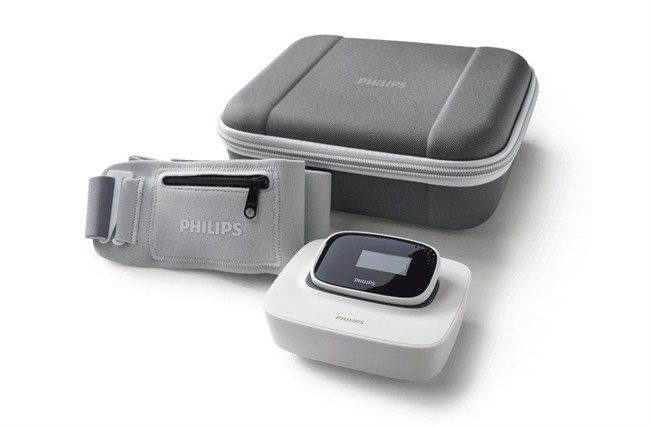Philips NightBalance: Combatting Positional Obstructive Sleep Apnea

There are multiple ways to treat sleep apnea to help patients target their most serious issues. One form of OSA, known as positional sleep apnea, is when patients have trouble breathing while sleeping in certain ways, normally on their back. The position constricts the patient’s airway, causing trouble breathing and can interrupt their sleep. Normally, positional OSA is with positional therapy, specialized pillows or belts, but Philips has recently released a new form of treatment, a positional trainer known as NightBalance.
NightBalance is a mask-free, positional trainer that monitors the patient’s sleeping. It is a small, wireless device that the patient slips into a band that they position around their upper torso. NightBalance will begin working 15 minutes after the patient falls asleep in any position they choose. For the first two days of use, the device monitors the sleep patterns of the patient. During nights 3-9 of using the device, it will begin to send gentle vibrations whenever the patient is sleeping on their back. The vibrations encourage the patient to flip over and sleep on their side to keep their airway clear. These nights are considered an adaptation period for the device, allowing it to find a balance between positional therapy and comfortable sleep. By night ten the adaptation period will be complete and the device will begin performing a complete treatment. When the device is not in use, it is set in its docking station, where it will charge and be ready for a full night’s sleep.
When the patient wakes up, they can look at the device to see the data the device collected from that night. The data includes sleep patterns, number of times it vibrates, how well you sleep and how well you respond to therapy. Patients can view a week’s worth of data by syncing the device to an app on their phone, and a month’s work by logging into their computer. This data can also be sent to the patient’s physician to see if the patient is responding well to treatment or if other methods should be considered.
NightBalance has been clinically proven to help those who suffer from Positional OSA. In a survey that followed 75 patients for an average of two years, 73% reported improvement in three of the most reported symptoms, non-refreshing sleep, breathing cessations, and gasping/choking throughout the night.
For more information about Philip’s NightBalance, click here.
Keywords: Apnea Monitor, BiPAP Machine, BiPAP ST Machine, BiPAP ST Supplies, BiPAP Supplies, CPAP Machine, CPAP Supplies, Doctors Locator, Durable Medical Equipment, Home Medical Equipment, Medical Equipment Centers, Medical Equipment Locator, Obstructive Sleep Apnea, Respiratory Supplies, Sleep Apnea Testing, Sleep Diagnostic Testing, Sleep Testing Centers
